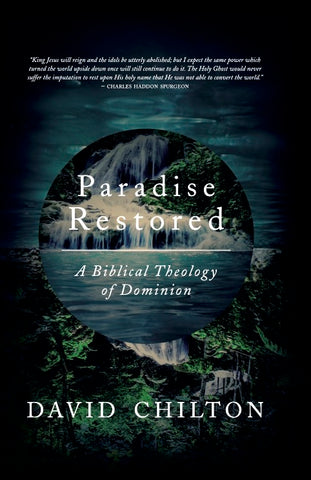Part Two of Two. Gary continues his response to Answers in Genesis’ Ken Ham. Ham uses 2 Peter 3 to show that we are in the “last days.”
John Owen asks the question that so many expositors fail to ask: Where had God promised to bring “new heavens and a new earth”? The answer, as Owen correctly states, is only in Isaiah 65 and 66—passages which clearly prophesy the period of the Gospel, brought in by the work of Christ. According to Isaiah himself, this “New Creation” cannot possibly be the eternal state, since it contains birth and death, building and planting (65:20–23). The “new heavens and earth” promised to the Church comprise the age of the New Covenant—the Gospel’s triumph, when all mankind will come to bow down before the Lord (66:22–23). John Bray writes: “This passage is a grand description of the gospel age after Christ came in judgment in 70 A.D. and took away the old heavens and the old earth. We now have the new heavens and the new earth of the gospel age.” St. Peter’s encouragement to the Church of his day was to be patient, to wait for God’s judgment to destroy those who were persecuting the faith and impeding its progress. “The end of all things is at hand,” he had written earlier (1 Pet. 4:7). John Brown commented:
“The end of all things” here is the entire end of the Jewish economy in the destruction of the temple and city of Jerusalem, and the dispersal of the holy people. That was at hand; for this epistle seems to have been written a very short while before these events took place. . . . It is quite plain that in our Lord’s predictions, the expressions “the end” and probably “the end of the world” are used in reference to the entire dissolution of the Jewish economy (cf. Matt. 24:3, 6, 14, 34; Rom. 13:11–12; James 5:8–9).
Once the Lord came to destroy the scaffolding of the Old Covenant structure, the New Covenant Temple would be left in its place, and the victorious march of the Church would be unstoppable. According to God’s predestined design, the world will be converted; the earth’s treasures will be brought into the City of God, as the Paradise Mandate (Gen. 1:27–28; Matt. 28:18–20) is consummated (Rev. 21:1–27).
This is why the apostles constantly affirmed that the age of consummation had already been implemented by the resurrection and ascension of Christ, who poured out the Holy Spirit. St. Paul, writing of the redeemed individual, says that “if any man is in Christ, he is a new creation; the old things have passed away; behold, all things have become new” (2 Cor. 5:17). St. John, recording his vision of the redeemed culture, says the same thing: “And I saw a new heaven and a new earth… The first things have passed away… Behold, I am making all things new” (Rev. 21:1–5). The writer to the Hebrews comforts his first-century readers with the assurance that they have already arrived at “the City of the living God, the heavenly Jerusalem” (Heb. 12:22; cf. Gal. 26–28; Rev. 21). Even as the old “heaven and earth” were being shaken to rubble, the early Christians were “receiving a Kingdom which cannot be shaken,” the eternal Kingdom of God brought in by His Son (Heb. 12:26–28).

Paradise Restored
When it was first published three and a half decades ago, Paradise Restored helped to precipitate a massive paradigm shift in the Evangelical and Reformed world from abject pessimism to unabashed optimism. The reasons are simple enough: this classic work is forthrightly Biblical. It is masterfully written. It is pungently clear. And it is powerfully persuasive.
Buy NowGary continues his response to Answers in Genesis’ Ken Ham. Ham uses 2 Peter 3 to show that we are in the “last days.” This has been done time and time again, and every time it has been shown to be wrong. Peter was speaking about events of his own day in the first century, not about the state of the culture or the church in our day.
Click here for today’s episode
Click here to browse all episodes of The Gary DeMar Podcast
Click here for the David Chilton/Gary DeMar article on 2 Peter 3

